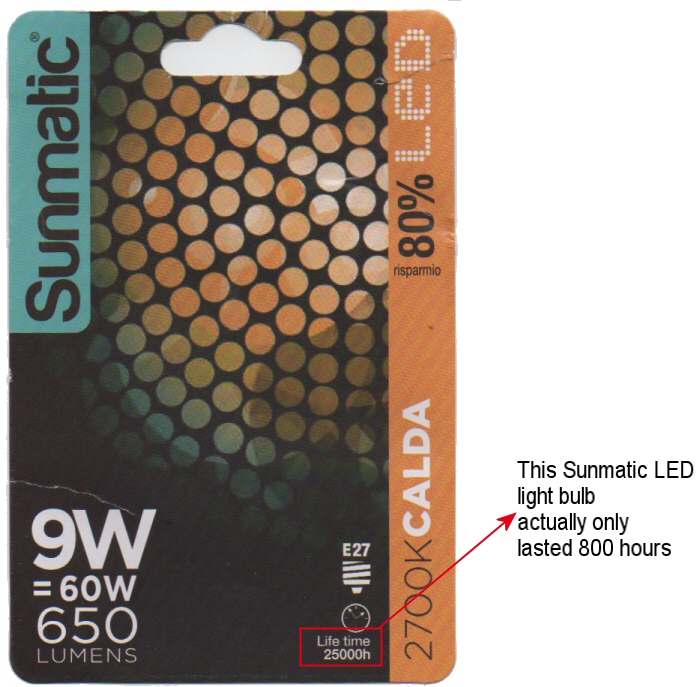Getting tired of the claims for LED lighting (in this case Sunmatic)?

Is anybody else getting tired of the claims of LED light bulb manufacturers? Sunmatic claim that this light bulb will last 25000 hours... ...it actually lasted less than 800, that is less than 4% of the claim. Well done SUNMATIC. Or should that be be GPBM Nordic? Sunmatic GPBM Nordic were wrong by 96% on the lifetime of their bulb, which if applied to the other numbers would mean: 3.2% energy saving (not 80%) 21 lumens (not 650) Something horribly wrong with the Kelvin figure. (I started actually measuring a bit more carefully the life of lightbulbs when several Philips light bulbs failed well before their claimed life.)





